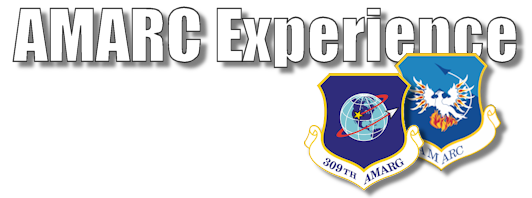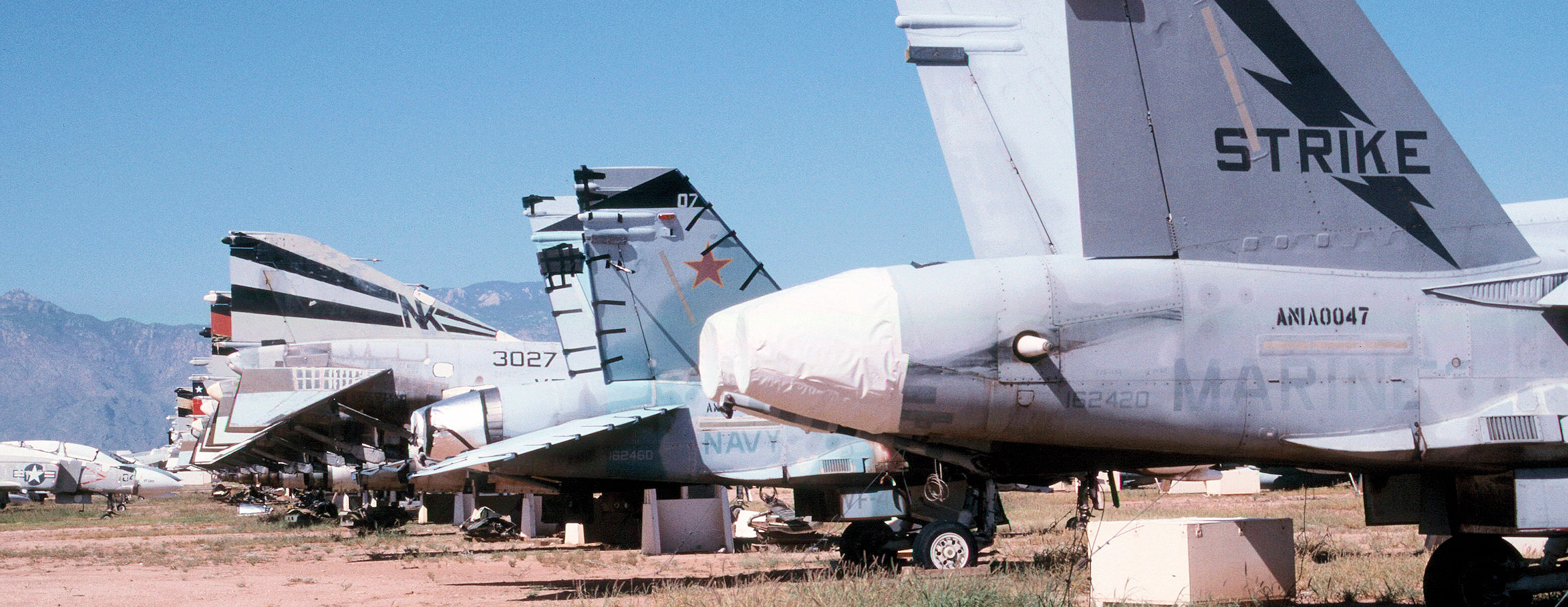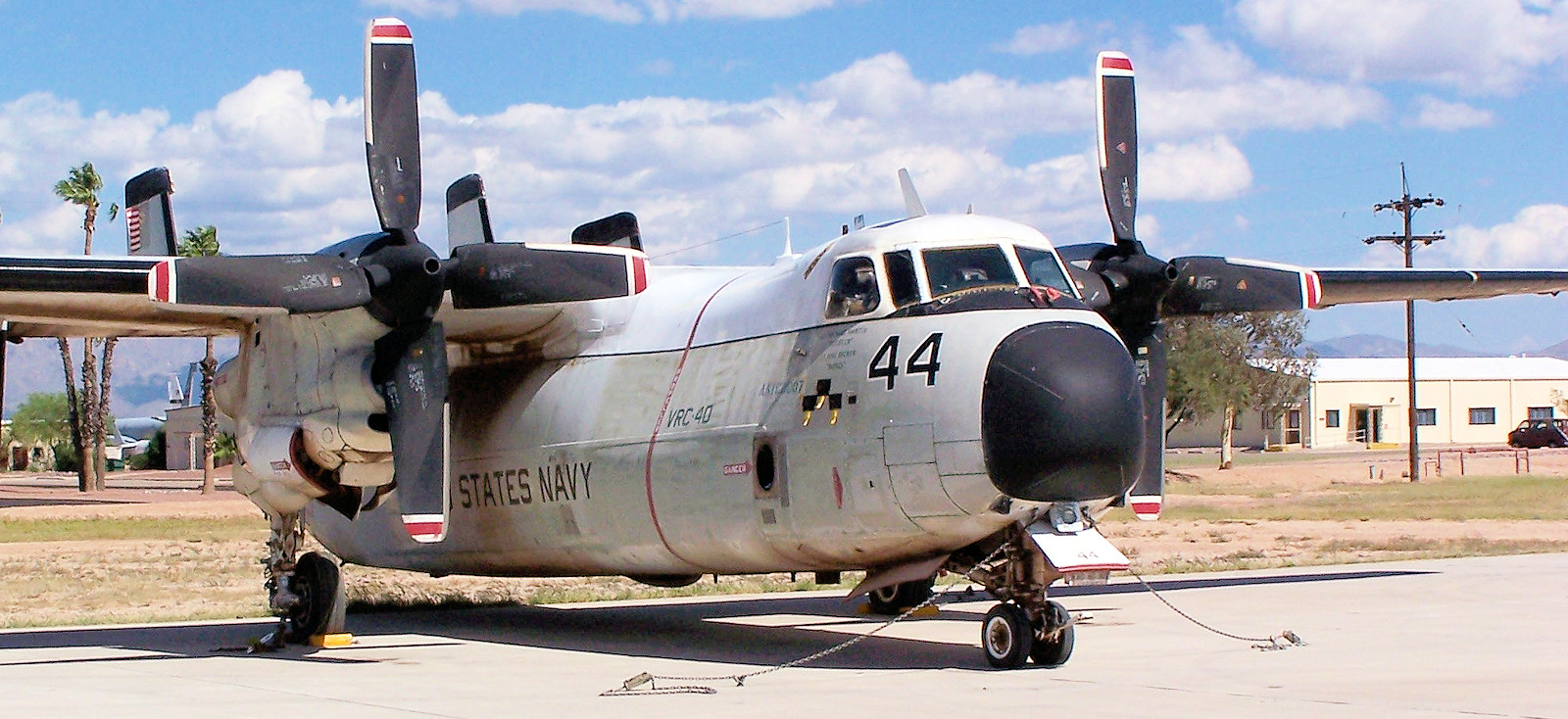AMARG, as it is called these days, has long been legendary in enthusiast circles. After all, where else in the world can you see close to 5,000 aircraft in a single day? For those of us who have been fortunate enough to visit AMARG it's a sight we'll never ever forget, but for our friends to follow what can they expect? Just what can you see from the outside? Where are the best vantage points? What's the best way to prepare for this awesome experience? While much has been written about the contents and activities at AMARG , this is a personal account intended to prepare newcomers for the experience so that they can take away as many great memories with them as possible!
Introduction
AMARG, or the Aerospace Maintenance And Regeneration Group to give it its formal title, is located on the edge of Davis-Monthan AFB just to the southeast of Tucson, Arizona. While adjoining the active base (home to A-10's and EC-130's of the USAF's 355th Wing) AMARG is in fact a separate entity to which even regular Air Force personnel are not normally authorised to enter. Dotted around the outside are a number of scrapyards - surplus stored airframes are sold off by the pound, often to spend many more years in these yards making perfect homes for rattlesnakes and scorpions! Also on the southern edge is the world-class Pima Air & Space Museum which, in addition to being home to several hundred historic aircraft (many of which originally came from AMARG), is the pick-up point for the popular AMARG bus tour which runs every couple of hours during the week.
'How do I get there?'
Don't even think about planning a visit to AMARG without a car! Not only is it in a fairly remote desert location, but also its sheer size makes a car essential to get from one vantage point to another. Rental cars are readily available (but reservations strongly recommended) at Tucson International Airport, which is about 5 miles to the southwest along Valencia, but for folks who are already visiting Arizona (already a mecca for enthusiasts even without AMARG!) it's about a 2 hour drive down I-10 from Phoenix. Take exit 267 southeast of Tucson and follow the "Pima Air & Space Museum" signs.
'How much time should I plan on?'
Ask five different people and you'll probably get five different answers to this question! My personal recommendation is at least two days for an initial visit - one day for fence crawling etc. then a second day to take the bus tour from the museum. Don't forget also to allow time to tour the excellent museum itself. And then there's all those perimeter scrapyards! Bottom line is that even if you planned three to four days in the Tucson area I doubt very much whether you'd have much chance to get bored!
'When should I go?'
Depending on your tolerance for heat, the best time of year is probably October through April. Remember that this is the desert and the summer can be pretty unforgiving with typical daytime temperatures upwards of 105 degrees…. and don't expect to find any shade! Regardless of the season, however, if you encounter anything but cloudless blue skies you've been pretty unlucky.
'Where should I stay?'
Fortunately there are numerous, reasonably priced motels in the Tucson area, and again I'm sure each person you ask will have his or her own personal favourites. There are quite a few new ones on the edge of Tucson International Airport, so one of these might serve as a good base-camp during your stay. As with rental cars an advance reservation is strongly recommended, and also might get you a better room rate. If you're planning to visit in the early part of the year (January-March) in particular a reservation might be essential since this is high season for tourism, culminating in the popular Major League Baseball "Spring Training" games throughout March.
'What should I bring?'
Three things immediately spring to mind that are essential to get the most out of your first AMARG experience (apart from the usual cameras, binoculars etc.) and most important of all is sunblock! Even if you prefer to get started as soon after sun-up as possible, the chances are you'll be as red as a beetroot without it before you even get halfway through the day - and this applies to wintertime just as much as in the blistering summer heat!
Second is an adequate supply of bottled water. If you're hiking the perimeter make sure you've got plenty in your backpack, with replenishments for when you get back to the car. I know this sounds like common sense, but it's easy to head off for a "five minute hike" and before you know it you're about three miles away from your car! There's a new "Diamond Shamrock" gas station and convenience store on the northeast corner of Kolb and Valencia, so this is an ideal location to stock up at the beginning of each day.
Third, but equally as important, is a stout pair of shoes. Not only will you find yourself walking a lot further than you were expecting to, but also you're never quite sure what you're going to meet along the way! I mentioned earlier that this area is home to scorpions and rattlesnakes - add to that the black widows, tarantulas etc. and you need to be prepared for pretty much anything! Luckily, most of these hide away during the daytime - but be careful where you're stepping nevertheless!
'Am I going to get arrested?'
We certainly hope not! Luckily the Air Force folks, as well as the local authorities, are well used to us aviation buffs making the pilgrimage to AMARG by now, so the sight of a telephoto lens or a telescope pointing in the direction of the stored airplanes should not arouse undue attention. The usual caveats apply, of course, and we expect and assume that all AMARC Experience readers will stay within the law and not screw things up for those of us that follow!
Please make sure when hiking the perimeter that you park your car well off the road (for example, there's an open area on the south side of Irvington just east of Kolb which is an ideal central parking location for your hiking expedition) and obey all traffic and security signs. Also be aware that many of the scrapyards can be pretty unreceptive to visitors, they are after all serious businesses carrying out their daily duties, so be careful how you conduct yourself around these areas and make sure you head straight for the office (or call ahead) if you plan to ask for permission to enter!
'What can I see from the outside?'
In order to best explain this I'm going to assume that you're already familiar with the general layout of AMARG, as depicted on the map elsewhere on the AMARC Experience website. As you'll see, Kolb Road runs north-south through AMARG - but what's not immediately apparent is that the section of Kolb south of Irvington Road is actually below ground level meaning that nothing can be seen, at least from a vehicle! The secret is to walk the fence line atop the embankment - this is possible on both sides of Kolb, giving excellent views of areas 21, 22 and 27 to the east and area 20 to the west, but extreme care needs to be taken climbing both up and down (particularly when needing to traverse under the three E-W overpasses) to avoid an embarrassing (and potentially deadly) tumble into the path of oncoming traffic!
The main vantage point on the east side of Kolb used to be a dirt track which runs parallel to Irvington Road along the northern perimeter of areas 21, 23, and 25. It used to afford unobstructed views of the inmates in those areas, as well as the northern parts of 22, 24, and 26. However, during 2001 a high earth bank was constructed within the base right next to the fence which effectively blocks any view of these areas. Note that the southern sections of 27, 24, and 26 are relatively inaccessible and difficult to see from the outside.
Moving to the west side of Kolb, it is possible to walk the entire length from atop the embankment adjacent to area 20 north past the Flight Lines (FLA and FLB), Flush Farm (FFxx), and the Wash Racks (WRxx), and on to excellent views of areas 13, 14, 10, and 6, where a turn to the west along Escalante will enable you to view the entire contents of areas 5, 4, and 3. The numerous P-3's in areas 8 and 9 are also easily visible in the distance from this area. Unfortunately, the remaining areas to the west are not clearly visible from outside the base - but there's another possibility...
'What else can I see from the bus tour?'
Ah, the much-maligned bus tour. OK, it's not the tour it used to be before the museum assumed responsibility for it, but it is nevertheless a very worthwhile experience (it's reasonably priced too, although it is in addition to the normal museum entrance fee.) The bus enters AMARG at the Irvington Gate, and approximately half the time on base is spent along Celebrity Row. From there the bus moves slowly between areas 2 and 7, 11 and 12, 15 and 16, then back past the Maintenance Shelter (MSxx) and North Maintenance Shelter (NMS) parking area. From here it crosses over Kolb on one of the overpasses and drives between 21 and 22, 23 and 24, turning back around between 25 and 26 before returning back to the museum via the Irvington Gate.
So there you have it - one person's perspective at least of what it's like to visit AMARG. As I've emphasized throughout, there'll be folks you'll talk to with differing perspectives, and that's great too! In fact we openly invite others to provide their comments and advice so that we can all benefit from them - the more views we receive the more we all learn!
Have a safe journey to sunny Arizona, and don't forget that sunblock!









